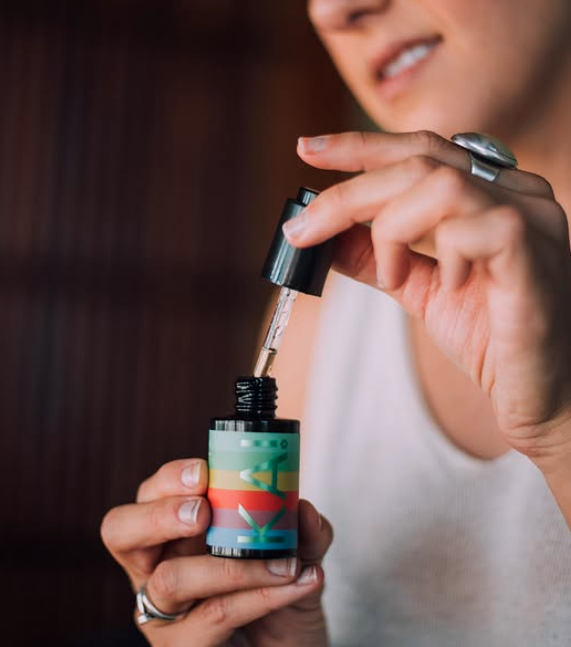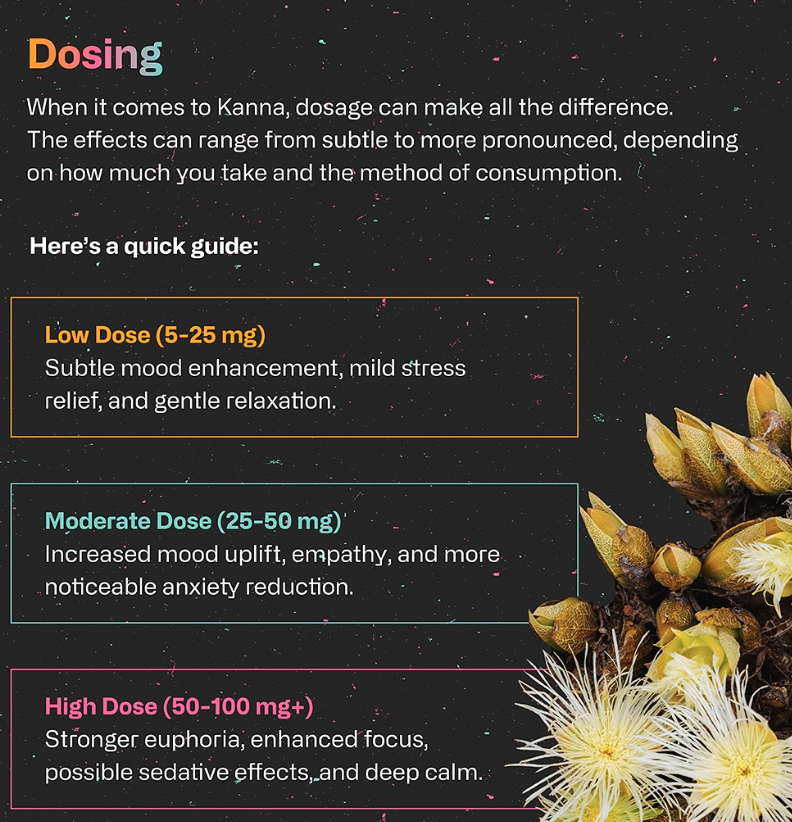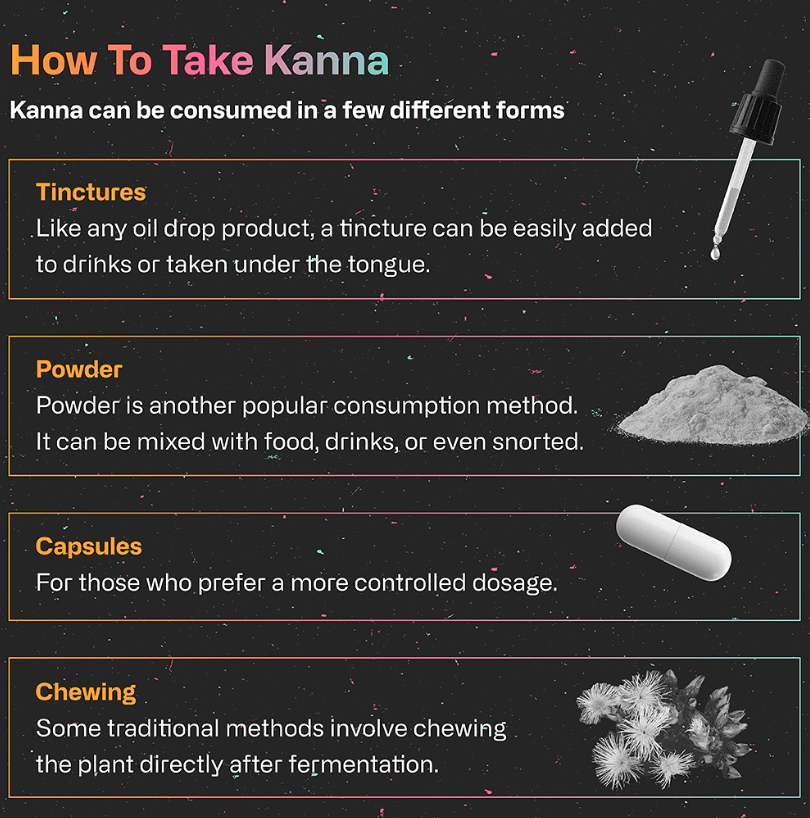KA! Empathogenics Review: Nature’s Version of MDMA Explained
I’ve always been curious about natural ways to lift my mood and bring more calm into my day, which is how I came across KA! Empathogenics and their focus on kanna. This plant has been used for centuries in South Africa for its ability to ease stress and support emotional balance, and now it’s gaining attention as a modern supplement. Kanna can help you feel more grounded, relaxed, and connected without being overwhelming or addictive.
📢 SPECIAL OFFER: Discover the gentle power of KA! Empathogenics and take the next step toward enhanced mood and clarity today. Use the discount code SAMA at checkout to enjoy 10% off any order from the official website and start experiencing its benefits right away.
When I tried kanna for the first time, the effects felt subtle yet noticeable. It wasn’t a rush or a high, but more like a gentle shift where my mind felt clearer and my body felt lighter. Some describe it as calming and uplifting at the same time, which matched my own experience. The best part is that it works in a way that feels natural and steady, not forced.
That’s what makes kanna stand out as a natural mood-booster. Instead of chasing an intense experience, you get a sense of ease and openness that fits into daily life. Whether you’re curious about how it works, what the benefits are, or what it actually feels like, exploring kanna through KA! Empathogenics opens the door to a plant with both history and science behind it.
What Is Kanna and KA! Empathogenics?
I see Kanna as both an ancient medicinal plant and a modern wellness tool. It has deep roots in South African traditions yet also fits into today’s interest in natural mood-boosters. KA! Empathogenics builds on this history by offering products designed to highlight Kanna’s calming and connecting qualities.
Origins and Botanical Background
Kanna, also known as Sceletium tortuosum, is a succulent plant native to South Africa. Indigenous communities have valued it for centuries, not only as a medicinal plant but also as part of daily life. It grows in arid regions and has adapted to harsh climates, making it a resilient botanical.
I find it fascinating that this plant was once chewed, smoked, or brewed into teas to help ease tension and support social bonding. Its natural alkaloids interact with serotonin pathways, which explains why it can influence mood and stress levels.
Today, researchers continue to study Kanna for its neuroprotective and adaptogenic qualities. Unlike stimulants or psychedelics, it works more gently, offering balance rather than intensity. This makes it appealing for those who want natural support for emotional well-being.
Traditional and Modern Uses
Historically, Kanna played a role in both ritual and everyday life. Indigenous groups used it to reduce anxiety, sharpen focus, and promote relaxation during gatherings. It was considered a plant medicine that supported both mind and body.
In modern times, I see Kanna being used in supplements, tinctures, and chewable forms. Companies like KA! Empathogenics focus on making it accessible in safe, standardized doses. Their approach blends traditional wisdom with clinical research, which helps people trust its effectiveness.
People often use it for stress relief, focus, and emotional grounding. Unlike stronger psychoactive substances, Kanna doesn’t overwhelm. Instead, it offers a subtle shift that can be felt in everyday settings like work, social interactions, or personal reflection.
Empathogenic Effects
What stands out most about Kanna is its empathogenic quality. That means it can gently increase feelings of connection, openness, and empathy toward others. I notice that it doesn’t create an artificial “high” but rather a natural softening of stress and tension.
Some describe the effects as calming yet uplifting at the same time. For me, it feels like a light boost in mood/euphoria and a clearer mental state. It’s not comparable to something like MDMA, which is far stronger and more intense. Instead, it is subtle yet noticeable, making you feel more at ease in your body and more open in your heart.
KA! Empathogenics emphasizes this aspect by framing Kanna as a way to support emotional balance and social connection. Their products highlight the plant’s ability to calm the nervous system while also encouraging a sense of presence and empathy.
Benefits of Kanna as a Natural Mood-Booster
When I use Kanna, I notice effects that touch on my emotions, stress levels, focus, and even how I connect with others. This medicinal plant works in subtle but meaningful ways, supporting balance in both the mind and body.
Mood Enhancement and Emotional Well-Being
Kanna (Sceletium tortuosum) has a long history as a plant medicine used to lift mood and bring emotional ease. I find its effects gentle but noticeable, creating a sense of lightness without overstimulation.
The alkaloids in Kanna, such as mesembrine, interact with serotonin pathways in the brain. This helps explain why I often feel more positive and emotionally steady after taking it.
Unlike synthetic mood enhancers, Kanna doesn’t overwhelm me. Instead, it supports a natural shift toward greater contentment. Many people describe it as a quiet uplift that makes daily life feel more manageable.
For me, the biggest benefit is that this uplift feels sustainable. I don’t experience a crash, and I can go about my day with a clearer, calmer outlook.
Stress and Anxiety Reduction
Kanna is best known for its calming properties. When I feel tense or restless, it helps me slow down without making me groggy. This makes it different from sedatives, which often leave me feeling dull.
Research shows that Kanna can reduce activity in brain regions linked to fear and stress. I’ve noticed that small doses help me feel less reactive in stressful situations.
It also seems to ease physical signs of stress. My body feels less tight, and I breathe more easily. This makes it useful not only for emotional relief but also for reducing the strain stress puts on the body.
Because it’s non-habit-forming, I feel comfortable using it regularly. It offers calm without dependence, which is important to me when choosing a natural option.
Cognitive and Social Effects
Kanna doesn’t just affect mood, it also enhances my mental clarity. I find it easier to focus, switch between tasks, and remember details after using it. This aligns with studies showing it can support executive function and working memory.
Socially, Kanna has a unique empathogenic quality. It helps me feel more open and connected in conversations. While the effect is subtle, I notice I’m more present and less guarded around others.
Some people compare this to MDMA, but I think that’s misleading. Kanna is far gentler. Instead of intense euphoria, I experience a soft sense of connection that feels natural and grounded.
This makes it a helpful tool for social anxiety, as it lowers barriers without altering my personality or judgment.
Adaptogenic and Nootropic Properties
📢 SPECIAL OFFER: Curious about how KA! Empathogenics can enhance your mind and mood? Don’t wait to experience the difference. Enter SAMA at checkout to get 10% off any order from the official website and see what subtle improvements it can bring to your day.
What sets Kanna apart from many natural mood-boosters is its adaptogenic and nootropic profile. As an adaptogen, it helps my body handle stress more effectively over time, not just in the moment.
I’ve noticed that with regular use, my baseline stress response feels more balanced. I don’t get thrown off as easily, and I recover faster from difficult days.
On the nootropic side, Kanna’s alkaloids inhibit PDE4, an enzyme linked to inflammation and fatigue. This gives me a clean boost in mental energy and endurance without jitters.
The combination of reduced stress and improved focus makes Kanna especially useful for demanding workdays. It supports both emotional resilience and cognitive performance, which is a rare pairing in plant medicine.
What Does Kanna Feel Like? Personal Experiences and Effects
When I take Kanna, I notice a gentle shift in how I feel rather than a dramatic change. The plant works in subtle ways, often leaving me calmer, more open, and more at ease with myself and others. The experience is steady, not overwhelming, and depends on the form and amount I use.
Sensory and Emotional Perceptions
The first thing I usually feel is a light sense of calm spreading through my body. My thoughts slow down, but I don’t feel sedated. Instead, there’s a steady clarity that makes it easier to focus without the jittery energy that stimulants can bring.
I often notice a mild lift in mood, like a gentle wave of contentment. It’s not intense or euphoric in the way stronger substances can be, but it’s enough to make daily stress feel lighter. Some people describe it as a “soft glow” or a quiet happiness.
Physically, I sometimes feel a bit more grounded. My body feels less tense, and small aches or discomforts seem to fade into the background. The sensations are subtle, but they add up to an overall state of ease.
Social Connection and Engagement
Kanna tends to make me feel more open and connected when I’m around others. I find myself listening more closely and speaking more freely, without the usual social tension. Conversations feel smoother, and I feel more present in the moment.
This effect is one of the reasons Kanna has been called an empathogen. It doesn’t push me into forced emotions, but it does lower the walls I sometimes keep up. I feel more comfortable sharing my thoughts and showing empathy.
In group settings, I’ve noticed a stronger sense of togetherness. Even simple interactions, like laughing with friends, feel more genuine and enjoyable. The plant doesn’t make me overly talkative, but it does help me feel more connected and less self-conscious.
Relaxation and Mindfulness
One of the most valuable effects for me is the way Kanna supports relaxation without dulling my mind. I can sit quietly, breathe deeply, and actually enjoy the stillness. It feels easier to let go of stress and focus on the present.
When I take it in the evening, I sometimes notice it helps me wind down. My body feels lighter, and my thoughts don’t race as much. This makes it easier to fall asleep, especially if I’ve been carrying tension through the day.
During meditation or mindfulness practices, Kanna can deepen the sense of calm. I feel more in tune with my body and emotions, and distractions don’t pull me away as easily. It’s a quiet support rather than a heavy push. (Note: I really love it for meditation/breathwork!)
Potential Side Effects
While the benefits are real, I’ve also learned to be mindful of side effects. Taking too much can sometimes make me feel drowsy or slightly numb, especially if I combine it with food. On rare occasions, I’ve felt mild nausea if the dose was higher than needed.
Some people report headaches or digestive discomfort, though I haven’t experienced that myself. Because Kanna affects serotonin, I suggest not mixing it with antidepressants like SSRIs or other medications that act on the same system.
It’s also worth noting that the effects can vary depending on the form. For example, tinctures act quickly but fade faster, while capsules or chews last much longer. Paying attention to dosage and timing helps me avoid unwanted effects and get the most out of the experience.
How to Use Kanna Safely and Effectively
I’ve found that kanna works best when I pay attention to how I take it, how much I use, and the situations I choose to avoid. The form, dosage, and timing all make a difference, and it’s just as important to know when not to use it.
For me, 1 to 2 full tincture vials hits the sweet spot. One vial is usually enough for meditation, writing, or long walks. For social gatherings, floating the San Marcos River near Austin, before a massage, or after a mentally demanding day, I typically take two vials. Of course, everyone’s body is different, so it’s worth experimenting to find the dose that works best for you.
Forms and Methods of Consumption
Kanna comes in several forms, and each has its own advantages. I’ve tried chews, tinctures, teas, and powdered extracts. Chews and tinctures are the most common because they’re easy to measure and fast-acting.
Chews usually dissolve in the mouth, which can cause a tingling sensation on the tongue. Tinctures are liquid drops taken under the tongue or mixed with water. Powdered kanna can be brewed into tea or placed in capsules, though the taste is often bitter.
I prefer chews when I want something simple and discreet, and tinctures when I want to adjust the amount more precisely. Each form works slightly differently in terms of onset time and duration, so experimenting with small amounts helps me figure out what feels best.
Dosage and Timing Recommendations
Starting low is the safest way to use kanna. I usually begin with a small chew or a few drops of tincture to see how my body reacts. Typical starting doses are about 5–20 drops of tincture or one chew, depending on the product strength.
The effects can appear within 20–40 minutes when taken sublingually. When brewed as tea or swallowed in capsules, it may take longer, closer to an hour. The effects are usually mild and last a few hours, with a calm uplifted feeling.
I’ve noticed that kanna works well during the day when I need focus and calm, but it can also help in the evening to wind down. I avoid taking too much at once because higher doses can sometimes feel sedating or cause mild nausea.
Precautions and Contraindications
Even though kanna is considered safe and non-addictive, I take a few precautions. Since it acts as a natural serotonin reuptake inhibitor (SRI), I recommend not mixing it with prescription antidepressants, especially SSRIs, to prevent unwanted interactions.
I also steer clear of combining kanna with alcohol or strong stimulants, since that can increase side effects. Anyone with heart conditions, low blood pressure, or those who are pregnant should check with a doctor before using it. I remember one time I took kanna along with a bit too much coffee and felt shaky for about an hour. You might not be as sensitive to caffeine, but the combination can still be uncomfortable.
For me, the key is moderation. I treat kanna as a supportive tool, not a daily requirement. By respecting its limits and my own, I get the benefits without unnecessary risks.
Final Thoughts
In summary, KA! Empathogenics offers a natural, gentle way to enhance mood, social connection, and mental clarity. It provides a safe and approachable experience that fits into daily routines, whether you are meditating, taking a walk, or enjoying a social gathering.






















